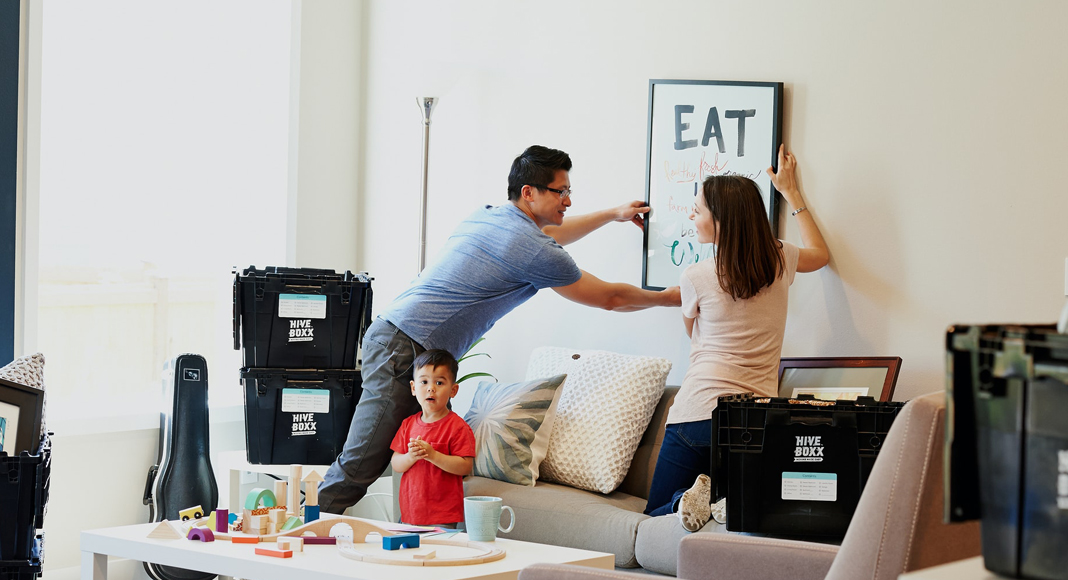
From the time a baby is born, we hear about tummy time and its importance. We are asked at every pediatrician’s appointment if we are having some tummy time daily and how it’s going. We do it, like so many other things, because we are told we’re supposed to in order to help our little ones grow and develop typically. As moms, we don’t always understand exactly why certain advice is given regarding our children, but I am 100% of the opinion that we should be educated and ask questions. I mean, sure, we know tummy time helps them gain muscles, but how and why? For answers, I met with Briana Ulanowski Smyer, an incredible Physical Therapist located within EIRMC’s Pediatric Therapy practice!
Like most moms, I worked hard to keep my babies on their tummies several times per day like the doctor recommended. Tummy time is simply any time your baby spends on their stomach playing or interacting with the world around them. It is so important because it targets the development of certain muscles, fine-tunes the communication between nerves and muscles, and increases joint development to be able to confidently bear weight and achieve controlled movements. This is important for future motor skills like rolling, sitting, crawling, and walking. Briana’s recommendations are simple and are typically recommended by pediatricians as well: for healthy, full-term newborn it is recommended that they spend 1-2 minutes at a time 2-3 times per day with an increasing frequency and length of time as they get older. By the time your baby is 3 months old, he or she should be up to about 90-120 minutes of tummy time throughout the day. Your pediatrician will let you know if there is any reason for you to avoid tummy time.
All babies need tummy time, but some may not enjoy it. While some may dislike it a bit, others may just absolutely melt down every time. It is so hard to watch your little one struggle, but it is crucial that he or she spend time out of supportive devices like car seats and swings.
If your baby hates tummy time, though, the specialists at EIRMC have some options to help him or her develop those muscles at home. One way is to hold your baby in front of you with his or her belly on your arms and their face pointing downward. Ensure your child is cradled safely! In this position, your child can still work against gravity focusing on extension and engaging his muscle groups. Another tip for babies that become upset is to lay your baby on your chest in a reclined position and engage with him or her. With their chest on yours while laying down, he or she still gets to practice using trunk muscles in that position versus laying on their back. This reclined chest to chest position may feel more supportive for your child and is an opportunity for some quality snuggles for you!
 Remember that tummy time is essentially a workout for your baby. He or she is using new muscle groups and it must feel weird and uncomfortable. Be patient and encouraging.
Remember that tummy time is essentially a workout for your baby. He or she is using new muscle groups and it must feel weird and uncomfortable. Be patient and encouraging.
Let’s walk through some tummy time related milestones. Keep in mind that these are recommendations and not hard and fast rules. All babies develop at a different pace, so use these as simple recommendations.
At 1 month, your baby should be able to lift his or her head to look around.
At 4 months, your baby should be propping him/herself up on his/her elbows
At 5 months, your baby will start using his or her legs to try to roll over
At 6 months, your baby should be bearing weight on his or her hands and be rolling over
A great way to coach your child through tummy time is to plan it into your routine at diaper change time. Every time your baby gets a fresh diaper, plan to lay him or her on the floor for a minute or two to start and then build up to a total of an hour a day by the end of three months. You can use mirrors on the floor, age-appropriate toys, and massage to keep your baby interested in being on his or her stomach for longer periods of time. Make sure baby is alert and awake and never leave him or her unsupervised. Watch other children and pets and it is recommended that tummy time stays on the floor rather than an elevated surface. If your baby really dislikes this activity, shorten the amount of time he or she is on his or her stomach, but increase the number of times you do it throughout the day. The wiggles and squirming that accompany tummy time actually help your baby use those developing muscles even better! Rather than just laying your baby straight down onto his or her stomach, transition baby from her back to her tummy by manipulating her hip and leg to cross over and encouraging her to roll. Doing this from an early age can accustom your baby to rolling over. If your baby experiences colic, avoiding tummy time right after a feeding may be a good idea.
So what happens if you don’t do tummy time or aren’t doing it often enough? There are a few different delays that can occur if baby isn’t getting enough time on his stomach. The first one is a simple delay in motor skill development. Without the muscle groups developing that are imperative for sitting/crawling, your little one may simply take a little longer than the recommended age to sit up or crawl. There are more serious repercussions to avoiding tummy time, though. One of the more serious conditions that could be caused by inadequate tummy time is flat head syndrome or positional plagiocephaly. While many babies have oddly shaped heads at birth, your baby’s head should be round and following/tracking movement in both directions by 2 months of age. If you are concerned that your baby’s head is really flat or he or she only turns her head in one direction (generally caused by positional torticollis), visit your pediatrician with your concerns. At 3 months, your pediatrician can give you a referral to a Physical Therapist at EIRMC or another local practice. At 4 months old, your child will be measured and fitted for a helmet if appropriate and then, at 6 months, if the measurements from front to back and diagonally of baby’s heads meet the required threshold, your baby will be prescribed a helmet to alleviate some of the one-sided pressure.
Another thing to consider when you are building your plan to help your baby develop as healthy as possible is the positioning of his or her devices like car seats, cribs, and swings. It is recommended that babies don’t spend a large amount of time in such devices except when necessary. However, babies do still spend a portion of time in these types of devices, so it is recommended that you move the crib, car seat, etc around so baby is encouraged to look in different directions rather than always the same way.
 It is incredible that before 1 month of age, a baby is developing his or her cervical spine muscles! At 2, 3, and 4 months, your baby is working on thoracic and mid-back muscles. Every time your little one does tummy time, he or she is fine-tuning muscles, nerves, strength, and his or her vestibular system. Once he or she is bearing weight in any joints, those muscles are developing.
It is incredible that before 1 month of age, a baby is developing his or her cervical spine muscles! At 2, 3, and 4 months, your baby is working on thoracic and mid-back muscles. Every time your little one does tummy time, he or she is fine-tuning muscles, nerves, strength, and his or her vestibular system. Once he or she is bearing weight in any joints, those muscles are developing.













